
- Panoramapunkt Berlin
- Friedrichstadt Palast
- Illuseum Berlin
- DDR Museum
- Berlin Wall Museum
- Berlin Welt Balloon
- Sachsenhausen Concentration Camp
- Studio of Wonders
- Madame Tussauds
- Samurai Museum Berlin
- LEGOLAND Discovery Centre Berlin
- Fotografiska Tickets
- Neues Museum
- Berlin TV Tower
- Berlin Dungeon
- Körperwelten
- The Upside Down Berlin Museum Tickets
From Ruins to Resurgence: The Architectural Revival of the Reichstag
Reichstag building architecture | A quick overview
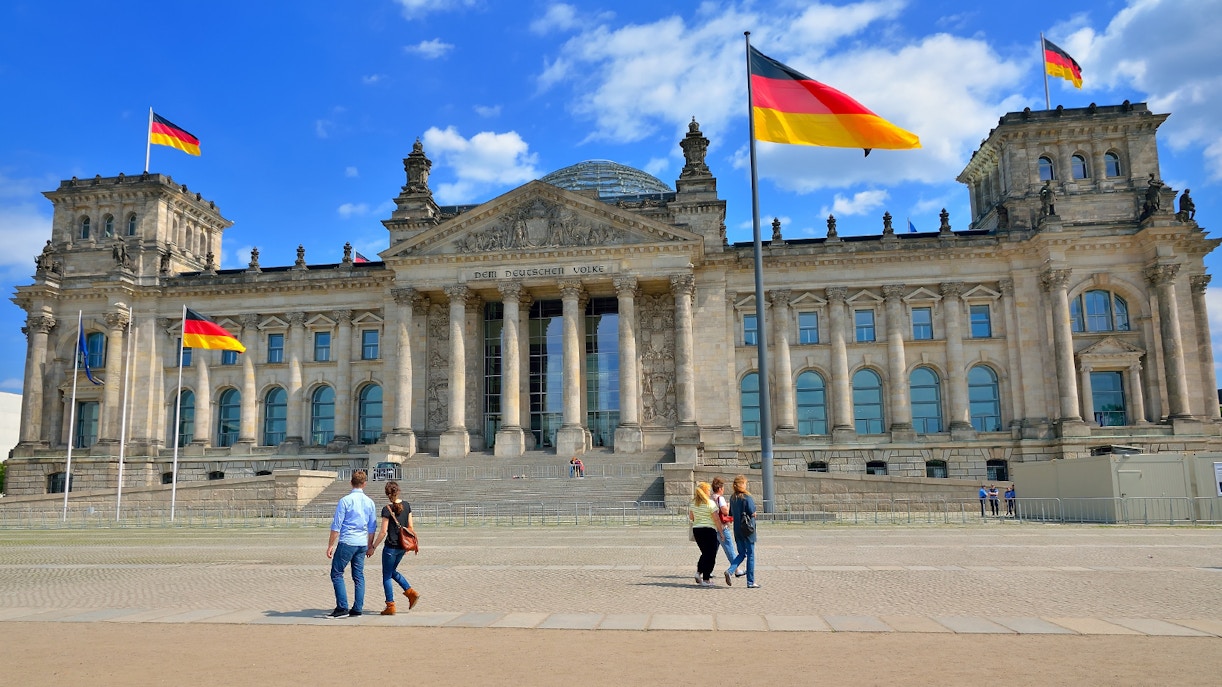
Official Name: Reichstag/Bundestag
Built in: 1894
Renovated in:
Architectural style: Neo-classical, Neo-Renaissance, Baroque
Reichstag building architect: Paul Wallot
Reichstag dome architect: Norman Foster (Dome)
Dimensions:
- 61,166 sq meters (area)
- 47 meters (height)
- 40 meters (dome diameter)
Reichstag architecture & design
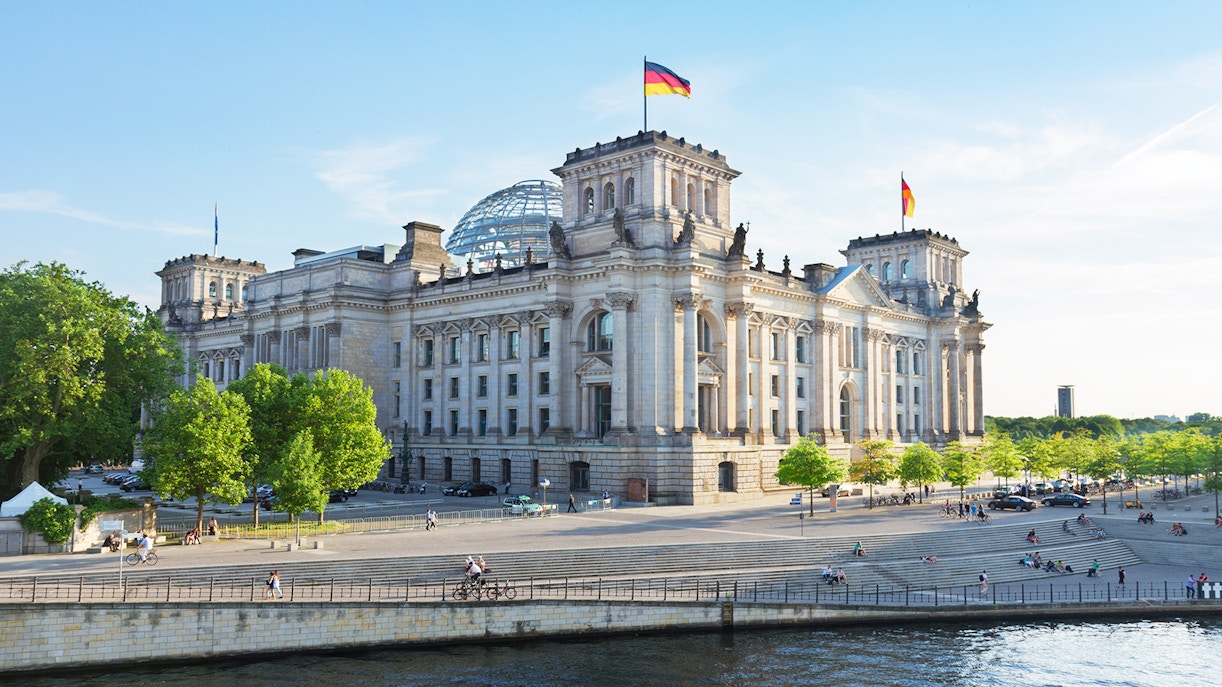
An amalgam of historical and modern architectural styles, the Reichstag displays both elements of the late 19th-century neo-Renaissance style through its historic facades and sculptures and a modern touch with its intricate glass dome that offers a bird's eye view of the city. The building’s hosting of both the historic and the modern has come to symbolize its resilience towards a tumultuous past and perseverance towards the future. It also houses Germany’s rich history and its current democratic values.
Inside ReichstagStructure of Reichstag
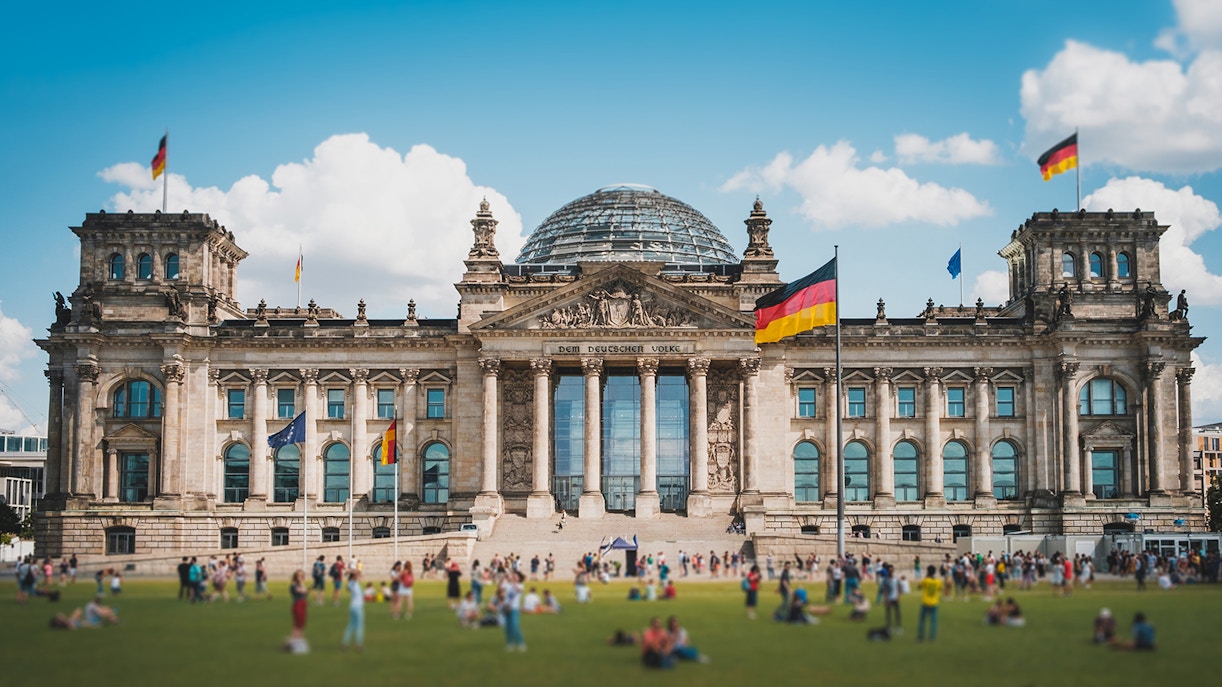
The Reichstag building is primarily constructed using steel, glass, and concrete materials. The glass dome is made of fireproof glass, allowing natural light to enter while ensuring safety. The building's structure is designed to be energy-efficient, with features such as solar panels and natural ventilation systems. The spiral ramp inside the building is made of steel and provides a unique and functional element to the overall structure. The Reichstag Berlin architecture and materials are used to showcase a combination of modern construction techniques and sustainable design principles.
Reichstag domeArchitectural highlights of Reichstag Berlin
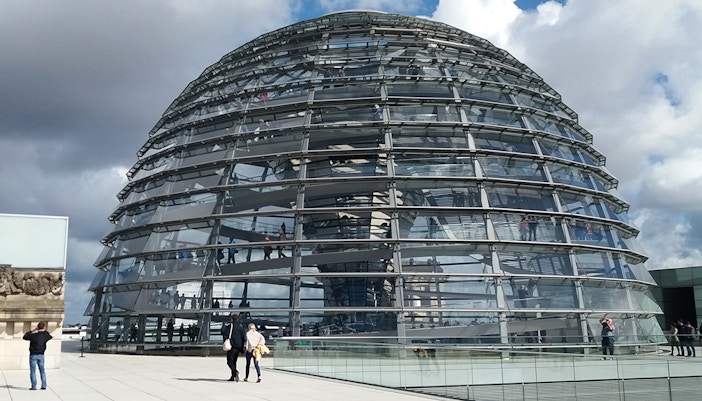
Glass dome
One of the most prominent architectural features of the building, the Reichstag dome was designed by Sir Norman Foster. Made of 3,000 glass panels it offers panoramic views of Berlin and also stands for the transparency and openness of the German government.
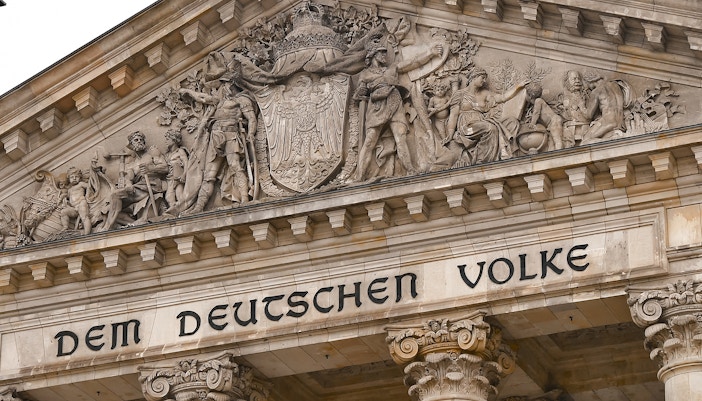
Facade
Designed by Paul Wallot, the historical facade features elaborate sculptures, reliefs, and decorative elements that reflect the neo-Renaissance architectural style of the late 19th century.
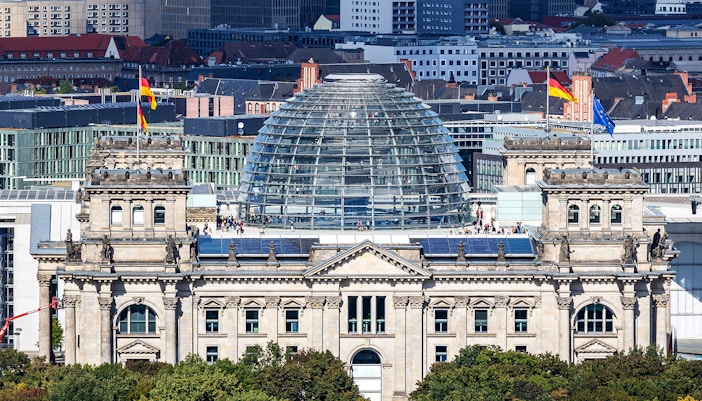
Sustainable design
The Reichstag's design incorporates various energy-efficient features, such as solar panels, natural ventilation systems, and rainwater harvesting, making it an exemplary model of sustainable architecture.
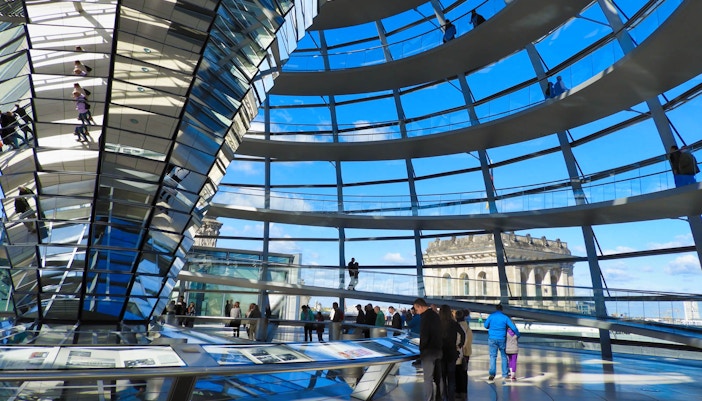
Spiral ramp
The Reichstag features a spiral ramp that leads visitors from the ground floor to the top of the glass dome, providing a unique and immersive experience as they ascend through the building while enjoying panoramic views of the city.
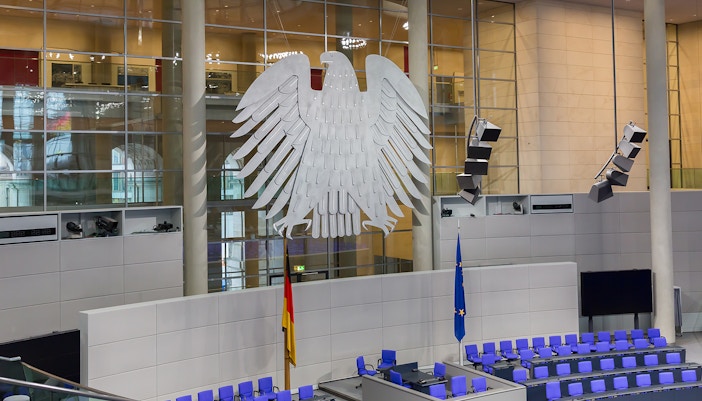
Plenary chamber
The plenary chamber of the Reichstag is equipped with an innovative lighting system that allows natural daylight to penetrate into the chamber, creating a unique and dynamic atmosphere during parliamentary sessions.
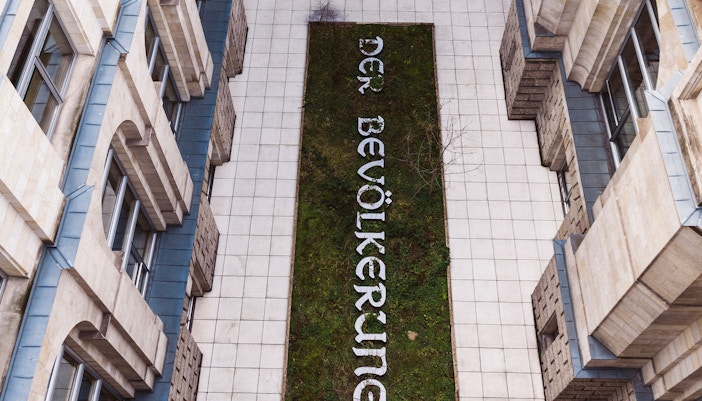
Inner courtyard
Completed with the historic facade and the modern glass dome, the inner courtyard offers a tranquil escape from the bustling government complex
Book Your Reichstag Tickets
Frequently asked questions about Reichstag architecture
A. The Reichstag sports an amalgamation of Neo-Classical, Neo-Renaissance, Baroque and modern architectural styles.
A. The Reichstag building was designed by German architect Paul Wallot.
A. The Reichstag Berlin architecture is famous for its historic significance as the seat of the German Parliament, its iconic dome, and its role as a symbol of democracy in Germany.
A. The construction of the Reichstag building started in 1884 and was completed in 1894.
A. The Reichstag building is over 120 years old, having been completed in 1894.
A. The Reichstag building houses the German Parliament, known as the Bundestag, and features modern parliamentary facilities, meeting rooms, and a public rooftop terrace with panoramic views of Berlin.
A. The Reichstag building has a total floor area of around 61,166 square meters.
A. The Reichstag building has a length of 137 meters, a width of 97 meters, and a height of 47 meters, with its dome reaching a height of 23.5 meters.
A. The Reichstag building is primarily made out of steel, glass, and stone, with a glass dome that provides natural light to the building's interior.